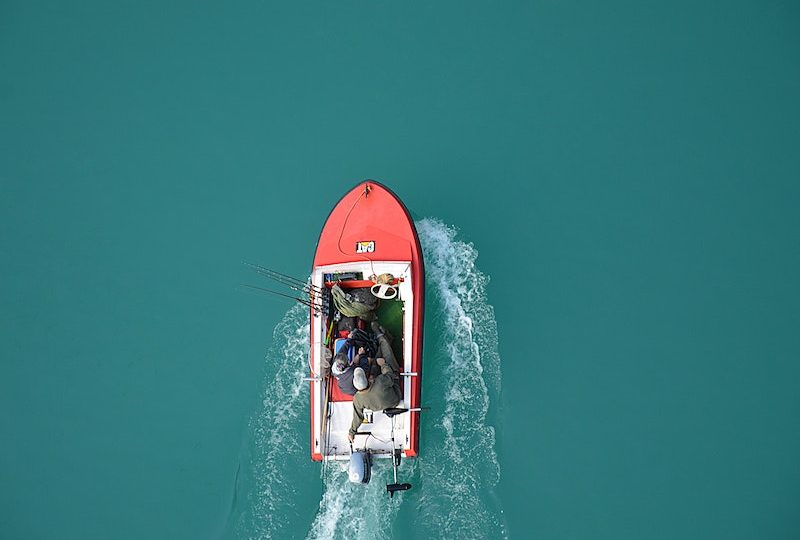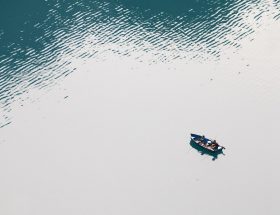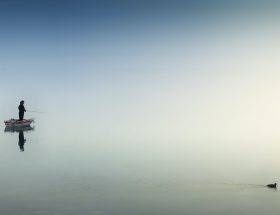This article delves into the intricacies of fishing, exploring the techniques and strategies that are crucial for success on the water. Whether you’re a seasoned angler or a beginner, you’ll discover valuable insights on everything from choosing the right equipment to reading the water and understanding the behavior of different fish species. With practical tips and expert advice, you’ll learn how to elevate your fishing game and increase your chances of a bountiful catch.
 Fishing is not just a pastime or hobby; for many people, it’s a way of life. The thrill of reeling in a big catch, the peacefulness of being out on the water, and the camaraderie among fellow anglers are just a few of the reasons why fishing is such a beloved activity. However, as any experienced angler knows, success on the water requires more than just luck. Mastering the techniques and strategies of fishing is crucial for consistently catching fish and making the most of your time on the water.
Fishing is not just a pastime or hobby; for many people, it’s a way of life. The thrill of reeling in a big catch, the peacefulness of being out on the water, and the camaraderie among fellow anglers are just a few of the reasons why fishing is such a beloved activity. However, as any experienced angler knows, success on the water requires more than just luck. Mastering the techniques and strategies of fishing is crucial for consistently catching fish and making the most of your time on the water.
Understanding Fish Behavior
Before even setting foot on a boat or casting a line, it’s important to have a basic understanding of fish behavior. Different fish species have unique tendencies and preferences when it comes to feeding and habitat, so knowing what you’re dealing with is essential for success.
Identifying Different Fish Species
The first step in understanding fish behavior is being able to identify different fish species. This can be done through visual observation or with the help of a fish identification guide. Common freshwater fish species include bass, trout, catfish, crappie, and bluegill, while saltwater fish species include redfish, snapper, tuna, and marlin.
Exploring Fish Behavior and Tendencies
Once you can identify different fish species, it’s important to learn about their behavior and tendencies. For example, bass tend to hang out near structures such as rocks or fallen trees, while trout prefer cold, clear water with a steady flow. Understanding these tendencies can help you select the right fishing spot and equipment to increase your chances of catching fish.
Understanding Feeding Patterns
Another important aspect of fish behavior to consider is feeding patterns. Fish may be more active at certain times of day or under certain weather conditions, and they may be more likely to bite on certain types of bait or lures. By understanding feeding patterns, you can choose the right time and approach to increase your chances of a successful catch.
Choosing the Right Equipment
Having the right fishing equipment is crucial for success on the water. From rods and reels to lures and bait, each piece of equipment plays a role in the fishing process.
Rods and Reels
When selecting a fishing rod and reel, consider the type of fishing you’ll be doing and the size of the fish you’re targeting. Spinning rods and reels are versatile and easy to use for beginners, while baitcasting rods and reels are better for more experienced anglers targeting larger fish species.
Lines and Leaders
Fishing lines and leaders come in a variety of materials and strengths. The Monofilament line is a good choice for beginners, while braided line is stronger and better for targeting larger fish. Leaders are used to attach lures or bait to the end of the line, and can be made of fluorocarbon or other materials.
Lures and Bait
Selecting the right lure or bait is crucial for enticing fish to bite. Different types of lures and bait work better for different fish species and in different environments. For example, live bait such as worms or minnows may work well for panfish or trout, while artificial lures such as crankbaits or jigs may be better for bass or walleye.
Accessories
Accessories such as hooks, weights, and bobbers are also important for fishing success. Choosing the right size and type of hook for your bait or lure, the appropriate weight to keep your line at the desired depth, and the right bobber to indicate when a fish bites can all make a big difference in your catch rate.
Reading the Water
To catch fish, you need to be in the right place at the right time. Understanding how to read the water can help you identify the best spots to cast your line.
Identifying Fish Habitats
Fish tend to congregate in areas where they feel safe and have access to food. These areas can include structures such as rocks, logs, or underwater vegetation, as well as changes in depth or water temperature. By identifying these fish habitats, you can increase your chances of catching fish.
Analyzing Water Conditions
Water conditions such as temperature, clarity, and current can all impact fish behavior and feeding patterns. For example, bass may be more active in warmer water, while trout prefer cooler water with a steady flow. By analyzing water conditions, you can choose the right time and location to maximize your chances of a successful catch.
Selecting the Best Fishing Spot
Combining your knowledge of fish behavior and water conditions can help you identify the best fishing spot. Look for areas with structure, changes in depth or current, or signs of fish activity such as jumping or splashing. Once you’ve found a promising spot, experiment with different baits and techniques to entice the fish to bite.
Tips for Fishing in Different Environments
Fishing techniques can vary depending on the environment you’re in. Fishing in a river requires different strategies than fishing in a lake or ocean. For example, in a river, you may need to cast upstream and let your bait drift downstream, while in a lake, you may need to troll or cast and retrieve around the structure. Understanding these differences can help you be more successful in any environment.
Essential Fishing Techniques
Mastering the essential fishing techniques is key to consistently catching fish. These techniques include casting, retrieval, setting the hook, and fighting the fish.
Casting Techniques
Casting is the process of throwing your line and bait or lure out into the water. There are a variety of casting techniques, including the overhead cast, sidearm cast, and roll cast. Practice your casting technique to improve your accuracy and distance.
Retrieval Techniques
Retrieval is the process of bringing your bait or lure back to you after casting. Different types of lures require different retrieval techniques, such as a steady retrieve or a stop-and-go retrieve. Experiment with different techniques to see what works best for the fish you’re targeting.
Setting the Hook
When a fish bites your bait or lure, it’s important to set the hook to ensure the fish stays on your line. To set the hook, quickly and firmly pull the rod upward. Practice setting the hook with different baits and lures to get a feel for the timing and pressure needed.
Fighting the Fish
Once you’ve hooked a fish, the battle is on. Fighting the fish involves using your rod and reel to tire the fish out and bring it closer to the boat or shore. Keep your line tight and use your rod to steer the fish away from obstacles such as rocks or weeds.
Advanced Strategies for Experienced Anglers
For experienced anglers looking to take their skills to the next level, there are a variety of advanced strategies to try. These strategies include night fishing, fly fishing, trolling, and jigging.
Night Fishing
Fishing at night can be a productive way to catch fish that are less active during the day. Night fishing requires additional safety precautions, such as proper lighting and awareness of your surroundings, but can be a rewarding experience.
Fly Fishing
Fly fishing is a specialized technique that involves using a lightweight, artificial fly to mimic the movement of insects and other natural prey. Fly fishing requires a different casting technique and often involves targeting specific fish species in rivers or streams.
Trolling
Trolling is a technique that involves dragging a bait or lure behind a moving boat to cover a larger area of water. This technique can be effective for catching fish that are spread out or less active.
Jigging
Jigging involves dropping a weighted lure or jig to the bottom of the water and then quickly lifting and lowering the rod to create a bouncing motion. This technique can be effective for catching fish that are located near the bottom of the water.
Conservation and Safety Tips
As anglers, it’s important to practice responsible fishing practices to protect the environment and ensure the safety of yourself and others.
Catch-and-Release Fishing
Catch-and-release fishing involves releasing the fish back into the water after it’s been caught. This practice helps preserve fish populations and can increase the chances of catching more fish in the future. Follow best practices for catch-and-release fishing, such as using barbless hooks and minimizing handling time, to reduce stress on the fish.
Proper Disposal of Fishing Line and Lures
Improperly disposed of fishing line and lures can pose a hazard to wildlife and the environment. Always dispose of fishing line and lures in a designated receptacle or take them with you to properly dispose of later.
Boating Safety
If fishing from a boat, it’s important to follow boating safety guidelines to protect yourself and others. This includes wearing life jackets, following speed limits and other regulations, and maintaining proper equipment and maintenance.
Conclusion
Fishing is a popular and enjoyable activity that can be enjoyed by anglers of all levels of experience. By understanding the basics of fishing, including equipment and techniques, as well as advanced strategies and conservation practices, you can increase your chances of a successful and rewarding fishing experience. Remember to always prioritize safety and responsible fishing practices to protect the environment and preserve fish populations for future generations.









